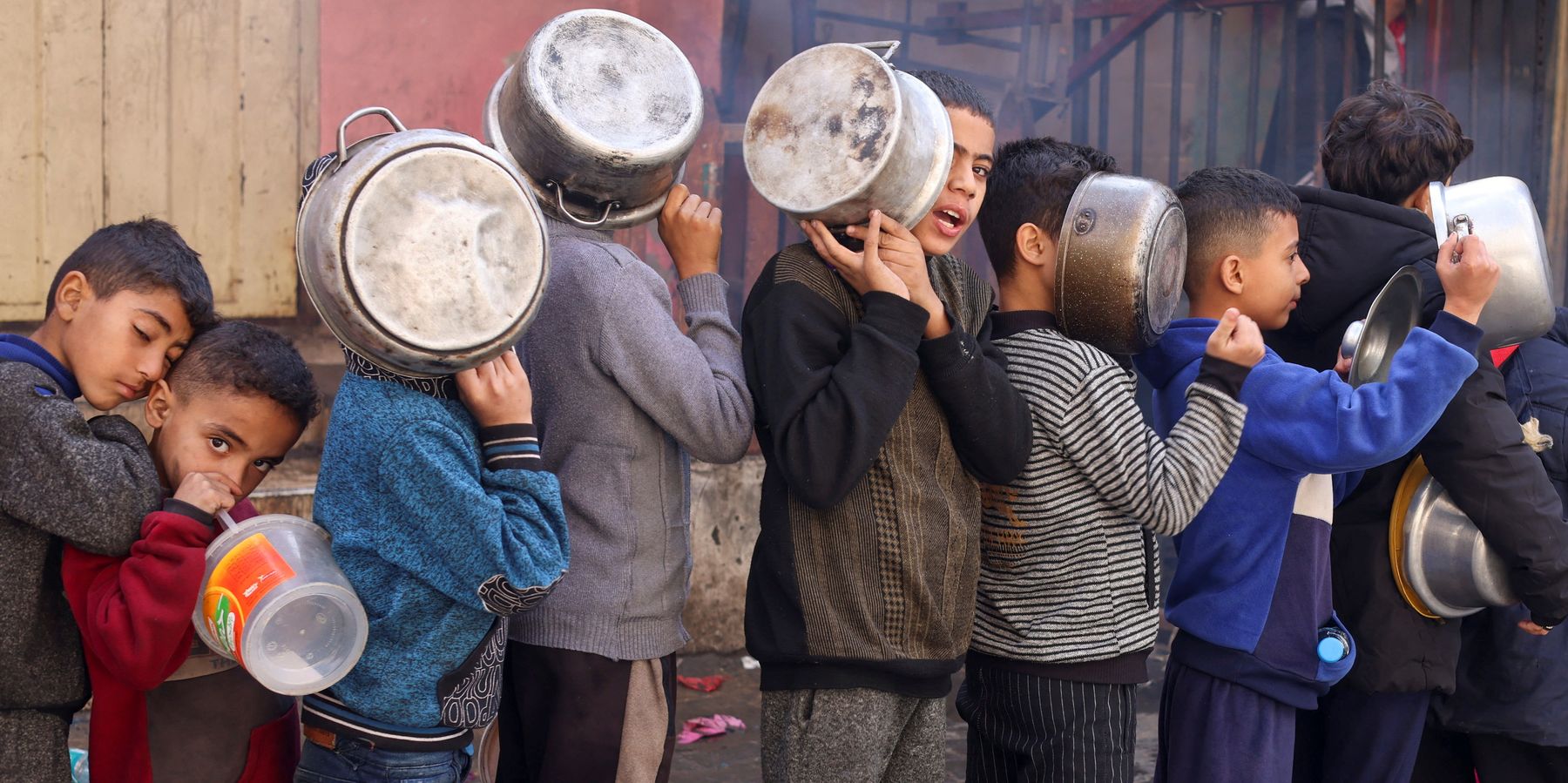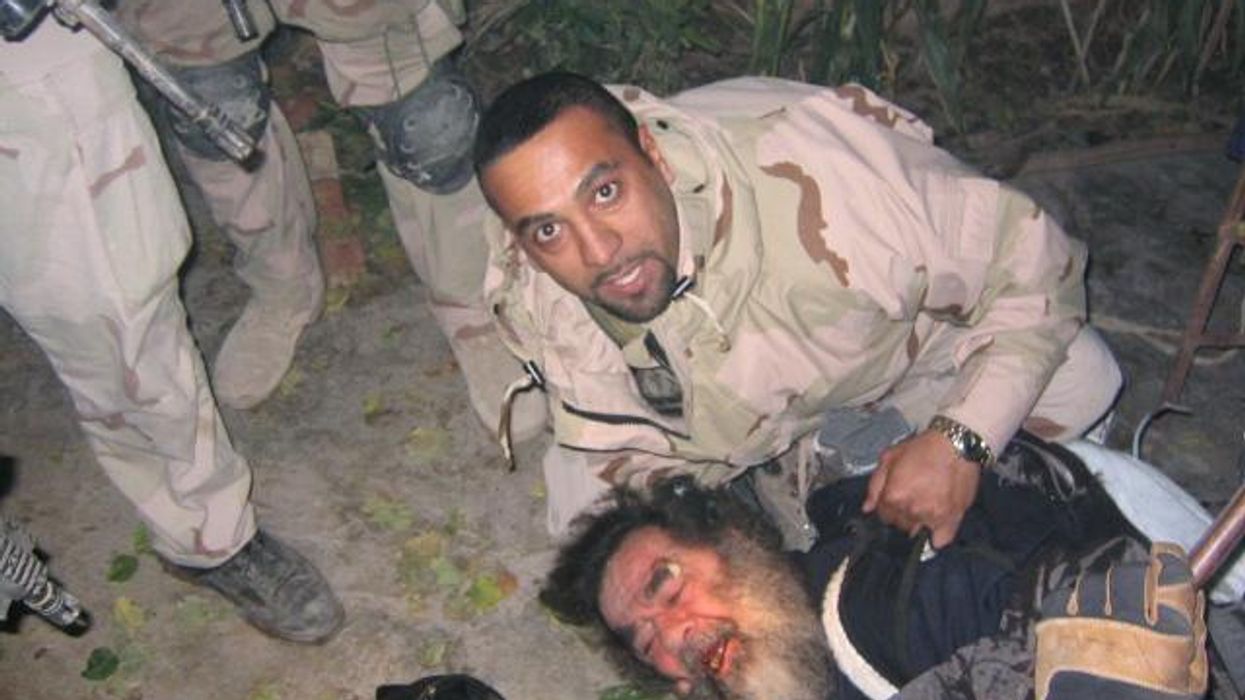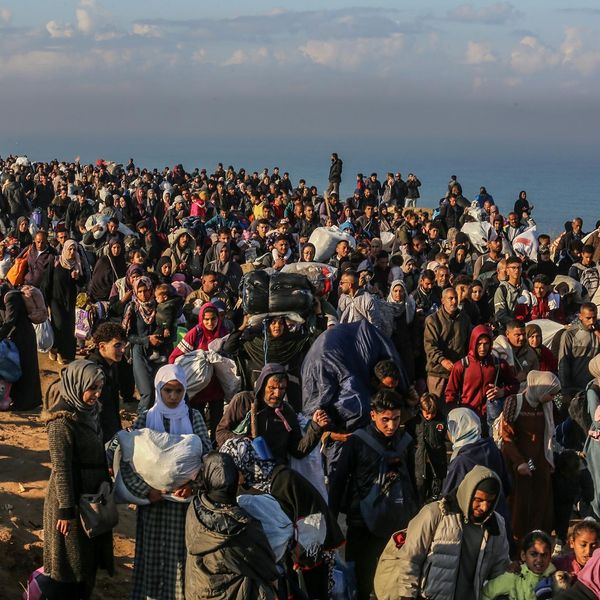The people of Gaza are facing one of the worst man-made famines in recent history.
The combined effects of bombing, displacement, and blockade have driven an already vulnerable population into severe, widespread hunger. This is not some accidental byproduct of conflict. Critics like Human Rights Watch charge that it is the result of a deliberate Israeli government policy to punish the entire population of Palestinians in Gaza for the crimes of Hamas.
Now we are seeing the calamitous consequences of that policy for more than two million people, 90% of whom have been displaced from their homes over the last three months.
Last month, the Integrated Food Security Phase Classification (IPC) initiative released a report on Gaza warning that a quarter of the population is now in the worst, catastrophic phase and that the entire population is highly food insecure and at risk of famine. According to the report, this is the highest level of acute food insecurity that the IPC has ever measured in a particular territory. Case in point: everywhere else in the world, there are roughly 130,000 people in IPC 5, the catastrophic phase, and in Gaza there are more than half a million.
Arif Hussain of the World Food Program told the New York Times earlier this month, “I’ve been to pretty much any conflict, whether Yemen, whether it was South Sudan, northeast Nigeria, Ethiopia, you name it. And I have never seen anything like this, both in terms of its scale, its magnitude, but also at the pace that this has unfolded.”
The WFP says that almost every Palestinian in Gaza is going more than a day without eating anything, and when there is an opportunity to eat, there is only a tiny amount to be split among extended families. According to reliable news reports, food is so scarce that people resort to eating whatever spoiled and rancid food they are able to find. Mothers with infants are so malnourished that they cannot nurse their babies, and what little food there is has become prohibitively expensive.
The blockade of commercial imports means there is no way to meet the basic needs of the population. In northern Gaza, where infrastructure has been wiped out and aid deliveries are impossible, conditions are even worse than in the rest of the Strip. The UN emergency relief coordinator, Martin Griffiths, has said, “Gaza has simply become uninhabitable. Its people are witnessing daily threats to their very existence – while the world watches on.”
The Israeli government’s policies are creating this disaster. Based on its analysis of Israeli government actions and official statements since October 7, Human Rights Watch has concluded that the Israeli government is using starvation as a weapon of war, which is a war crime under the Geneva Conventions. The New York Times quoted Omar Shakir, Human Rights Watch’s Israel and Palestine director, “For over two months, Israel has been depriving Gaza’s population of food and water, a policy spurred on or endorsed by high-ranking Israeli officials and reflecting an intent to starve civilians as a method of warfare.”
The Israeli government denies the charges that it is hindering aid, and points to the deliveries that have been let in, but this defense strains credulity. The small amount of food and fuel that is allowed in must first go through a laborious, time-consuming inspection process, and the aid that makes it through is insufficient to meet the needs of millions of uprooted people in a territory otherwise cut off from the outside world.
Scholar Alex de Waal wrote in a new article that “the catastrophic humanitarian crisis in Gaza is a deliberate act. Gaza is a starvation crime scene.” He explains that “[t]he rigor, scale and speed of the destruction of OIS [objects indispensable to survival] and enforcement of the siege surpasses any other case of man-made famine in the last 75 years.”
De Waal has written an important history of modern famine, Mass Starvation, in which he wrote about the recent atrocity famines that have been created in this century in Yemen, South Sudan, Sudan, Uganda, Nigeria, Syria, and Somalia.
The U.S. government response to what is a new “atrocity famine” in Gaza has been poor and inadequate. Secretary of State Antony Blinken was in Israel Tuesday, and acknowledged the need for aid to get in and said that there “far too many” deaths in Gaza. But he did not assign blame to Israel and like all administration rhetoric, would not put any weight behind it. Continued unconditional support for Israel’s military campaign and Washington’s stubborn opposition to any resolution calling for a ceasefire at the U.N. have meant that there is little or no pressure on the Israeli government to change course.
As Israel’s principal patron and arms supplier, the U.S. bears significant responsibility for both the campaign and the policy of collective punishment to which it belongs.
The only way to avert large-scale loss of life from hunger and disease in Gaza is an immediate ceasefire and a lifting of the siege. The longer it takes to secure a ceasefire, the more innocent people in Gaza will die preventable deaths. Staving off famine in Gaza should be Washington’s top priority. If the U.S. does not act in time, it will be a black mark on our national reputation and one of the greatest foreign policy failures in our history.
In Biden’s first year as president, the State Department made the unpopular move of reversing the previous administration’s designation of Ansar Allah, a.k.a., the Houthis, as a terrorist organization. The decision to remove the Houthis from the list of terrorist organizations was done because of the threat of famine to Yemeni civilians that the designation had created. The administration made the right call then to preserve the lives of innocent civilians, and it must do so again now.
















